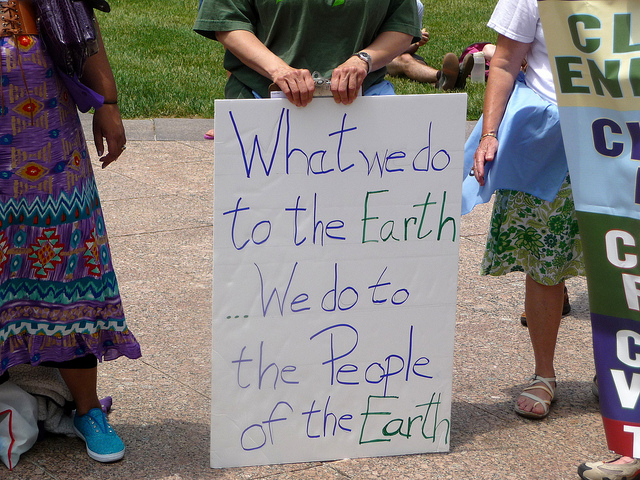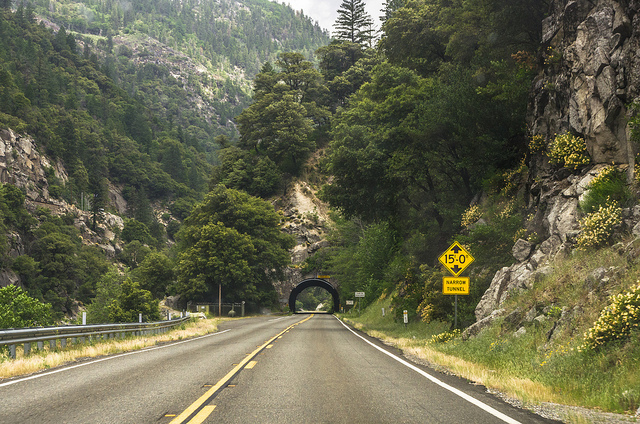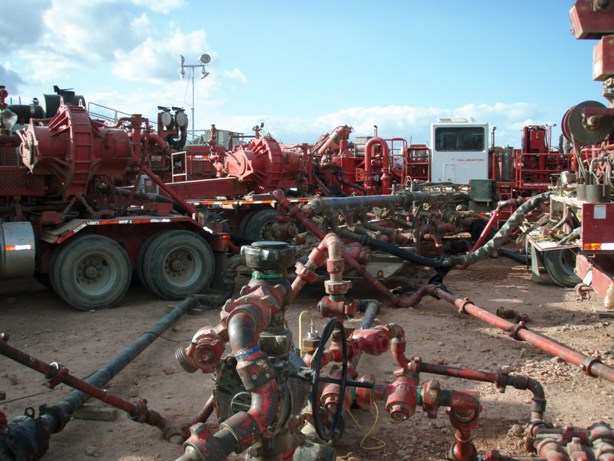I recently went on a road trip from San Diego to San Francisco.
During this road trip, I took advantage of the time I had on the open road to observe what was around me. I stared at the world in awe, and I began to notice a lot of things.
One of those things was the prevalence of fracking stations all over Southern and Central California.
It seemed odd to me that in a state that is a leader in clean energy there would be so many fracking stations. In Los Angeles alone, I noticed at least 20 stations (I lost count after a while). So I made a conscious decision during that road trip to delve into this, and discover what fracking really is, why it’s happening in the U.S. and its implications for the environment.
Fracking is short for hydraulic fracturing, which is the process of drilling down into and injecting hydraulic fluid into the earth at high-pressure to fracture shale rocks to release natural gas inside. The hydraulic fluid injected into these wells is made up of water, sand and salt, citric acid, benzene, uranium, mercury, ethylene glycol, radium, methanol, hydrochloric acid, formaldehyde or lead. Roughly four million gallons of water is used per well and 40,000 gallons of chemicals are used per fracturing. There’s an interactive website where we can see what fracking is at a glance.
Natural gas from fracking creates the back-bone for a lot of things we do in everyday life. Fracking has a variety of commercial and industrial uses, such as:
>> Running stove cooktops, home heating and food processing
>> Operating gas turbines to create electricity
>> Running a variety of transportation vehicles
The oil industry claims that shale gas is an abundant, local and affordable option for the U.S. energy sector. According to their sources, there is at least 100 years worth of shale gas found throughout the United States, making it the newest oil producing giant in the world. To them, fracking is an essential part of U.S. oil production and allows them to decrease their dependence on foreign oil sources as the U.S. becomes the largest oil producer in the world.
Nevertheless, to me, fracking still seems like an unnatural process that would be harmful to the environment. I remember being shocked the first time I saw a fracking site in lower, industrial Los Angeles. I drove by the site in horror and wondered about the environmental impact the site had on the surrounding area.
It seems as though I’m not alone.
Organizations such as Greenpeace, Food and Water Watch, Friends of the Earth, 350.org, Democracy for America, and others have banded together to create the American Coalition Against Fracking. These organizations have done a lot of their own independent research, and claim that fracking affects the environment in a variety of ways: through contamination of nearby groundwater, methane and volatile organic compound leakage into the atmosphere, and ground contamination due to poor retrieval of hydraulic fluids, which, by the way, are non-biodegradable. Furthermore, extreme overuse of natural resources such as sand and water are another concern.
So it seems as though the industry is claiming one thing while environmental organizations are claiming another, a dichotomy which is typical in America. This is an area of huge concern politically as we head toward the presidential election in November.
Presumptive democratic nominee Hillary Clinton has supported fracking for some time now. In a recent investigation by The Intercept, they found that while Clinton was Secretary of State, her department worked closely with private sector oil and gas companies, pressed other agencies within the Obama administration to commit federal government resources to assist the fracking industry, and distributed agreements with partner nations pledging them to secure investments for new fracking projects. Plus, Greenpeace has found that Clinton’s current presidential campaign has been backed by at least two million dollars worth of bundled or direct donations from lobbyists currently registered as lobbying for the fossil fuel industry.
And yet, Clinton’s campaign website claims that she will not “let anyone take us backward, deny our economy the benefits of harnessing a clean energy future, or force our children to endure the catastrophe that would result from unchecked climate change.” She also claims on the site that she will “create good-paying jobs by making America the clean energy superpower of the 21st century.” However, that doesn’t seem like much of a promise since the EPA claims fracking to be a form clean energy.
The uncertainty behind this form of energy production brings so many questions to my mind. Why is fracking legal when there are so many environmental concerns surrounding it? How can the EPA—an agency whose focus and obligation under the law is to provide oversight, guidance and, where appropriate, rule-making that achieves the best possible protections for the air, water and land where Americans live, work and play—stand behind fracking as a form of clean energy? Why does the government ignore the overwhelming dissent about fracking from many of the biggest and most vocal environmental organizations in the world?
All of this leads to the biggest question of all: why is the government protecting the interests of a few while undermining the safety and security for the majority of Americans?
In a time where upfront action needs to take place to combat climate change, I’m not convinced fracking is the answer to our clean energy problems.

Author: Alex McGinness
Images: Joshua Doubek/Wikimedia Commons; ProgressOhio/Flickr, David Prasad/Flickr
Editors: Catherine Monkman; Lindsey Block










Read 0 comments and reply